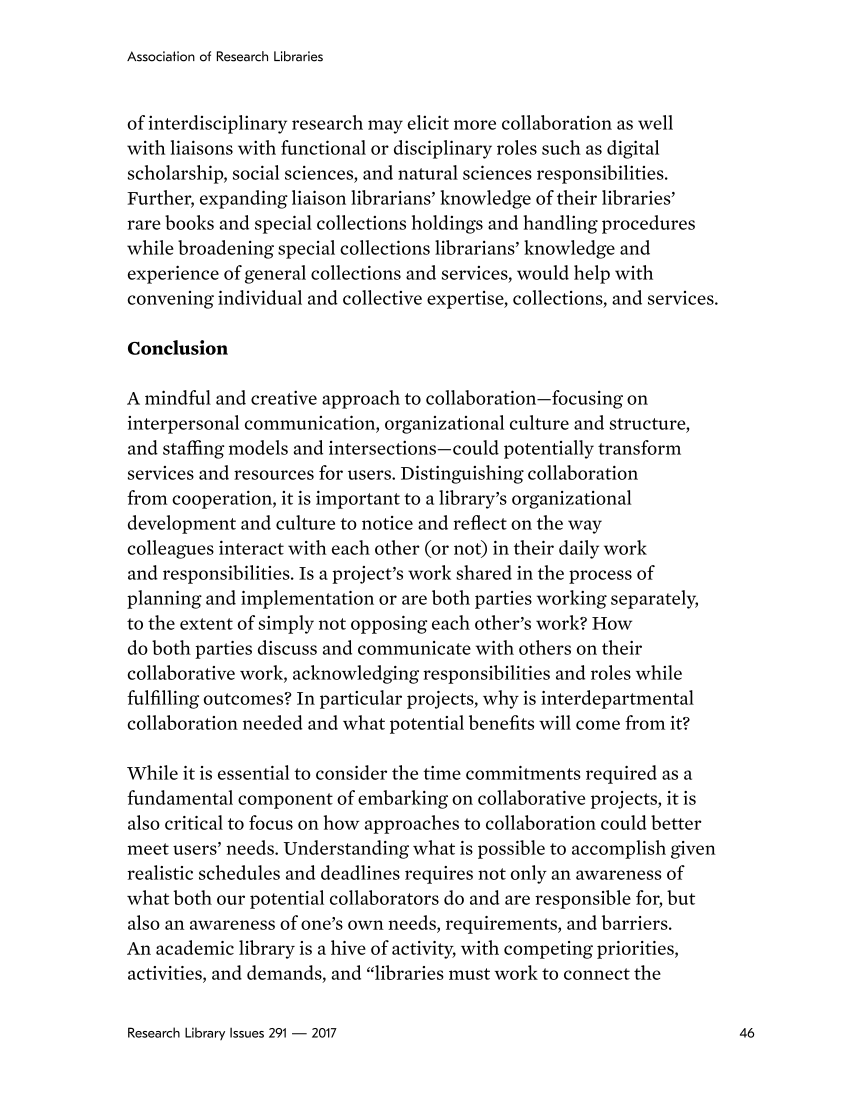46 Association of Research Libraries Research Library Issues 291 — 2017 of interdisciplinary research may elicit more collaboration as well with liaisons with functional or disciplinary roles such as digital scholarship, social sciences, and natural sciences responsibilities. Further, expanding liaison librarians’ knowledge of their libraries’ rare books and special collections holdings and handling procedures while broadening special collections librarians’ knowledge and experience of general collections and services, would help with convening individual and collective expertise, collections, and services. Conclusion A mindful and creative approach to collaboration—focusing on interpersonal communication, organizational culture and structure, and staffing models and intersections—could potentially transform services and resources for users. Distinguishing collaboration from cooperation, it is important to a library’s organizational development and culture to notice and reflect on the way colleagues interact with each other (or not) in their daily work and responsibilities. Is a project’s work shared in the process of planning and implementation or are both parties working separately, to the extent of simply not opposing each other’s work? How do both parties discuss and communicate with others on their collaborative work, acknowledging responsibilities and roles while fulfilling outcomes? In particular projects, why is interdepartmental collaboration needed and what potential benefits will come from it? While it is essential to consider the time commitments required as a fundamental component of embarking on collaborative projects, it is also critical to focus on how approaches to collaboration could better meet users’ needs. Understanding what is possible to accomplish given realistic schedules and deadlines requires not only an awareness of what both our potential collaborators do and are responsible for, but also an awareness of one’s own needs, requirements, and barriers. An academic library is a hive of activity, with competing priorities, activities, and demands, and “libraries must work to connect the


















































